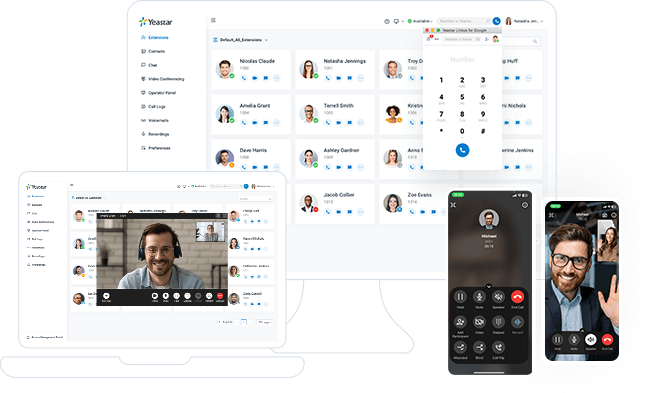PBX systems have long been the backbone of business communications, handling everything from VIP calls and customer service hotlines to hotel wake-up reminders. These traditional scenarios are well-supported. But as businesses grow and customer expectations rise, static routing rules are no longer enough. Managing dozens — sometimes hundreds — of call paths becomes inefficient, error-prone, and unable to keep up with evolving workflows. Take these common real-world challenges, for example:
- A VIP client is calling, but all agents are busy. You urgently need to interrupt a call or alert a supervisor — how do you make it happen?
- A Friday promotion begins. Can your system automatically detect the timing and play a promotional message at the beginning of each call — without manual updates?
- You have a CRM system that tracks billing status. Can your PBX dynamically route callers to different agent groups based on that status?
These aren’t just routing issues anymore — they’re workflow automation challenges. And that’s exactly what Call Flow Designer is built to solve.
What is Call Flow Designer?
Yeastar Call Flow Designer (CFD) is a visual call automation tool built in the P-Series Phone System — no plugins or third-party tools required. With an intuitive drag-and-drop interface and support for conditions, loops, and variables, it empowers you to build customized call workflows in just hours.
It leverages native PBX components like Business Hours, IVR, Menu, Prompts, Dial by Number, Text-to-Speech, and more — all fully compatible with external CRMs and databases — to automate your business logic such as VIP routing, caller authentication, dynamic PIN verification, group transfers, in-or-after-call email notifications, and beyond.
From initial call entry to dynamic routing and post-call actions, Call Flow Designer helps agents manage calls more efficiently and customers reach the right destination faster.
Built-in, Drag-and-Drop Interface
22+ Native Action Blocks
CRM, Database & Developer Integration
Ready-to-use Templates
Practical Import & Export Support
Key Native Blocks
|
|
Key Sections of Call Flow Designer

To understand how the Call Flow Designer works, it’s essential to first get familiar with its core structure and the role of each part in building call flows.
How Does It Work?
Once you’re familiar with the building blocks of Call Flow Designer, you can easily construct an end-to-end automated call flow by dragging components into the Design Area.
Stage 1: Pre-call Handling
Define rules based on caller ID, dialed DID, business hours, and more. Route incoming calls dynamically by time, location, or identity.
Stage 2: In-call Handling
You can use actions like Prompts, Menus, User Input, and Transfer to manage the live call. Set up linear, branching, or looped logic depending on the workflow.
Stage 3: Post-call Actions
Trigger follow-ups like sending emails, pushing data to CRMs, or generating dynamic auto-responses using Text to Speech. Developer blocks extend your workflow beyond the call.
Stage 4: Save and Deploy
Once the flow is designed, simply save and publish it. The call flow can then be applied to a specific phone number or entry point. Each flow is fully visual, editable, and adaptable.


Design Your Call Flow From Here
Easily drag, drop, and deploy your call workflows from basic routing to complex CRM-integrated logic. Try Yeastar PBX free for 30 days and see how Call Flow Designer can streamline your call handling.
Application Scenarios of Call Flow Designer
Benefits of Call Flow Designer
For Users
Easy to use without technical skills
Clear call flows for consistent customer handling
Higher agent efficiency through automated tasks
Smart voice interaction using built-in blocks
For Service Providers
Fast project rollout with reusable templates via import/export
Lower maintenance cost with drag-and-drop setup and no complex coding
Professional delivery with sharable visual flowcharts for better client communication
Integration ready with support for CRMs and databases to enable advanced workflows

Further Readings of Call Flow Designer
Related Features & Solutions
X
